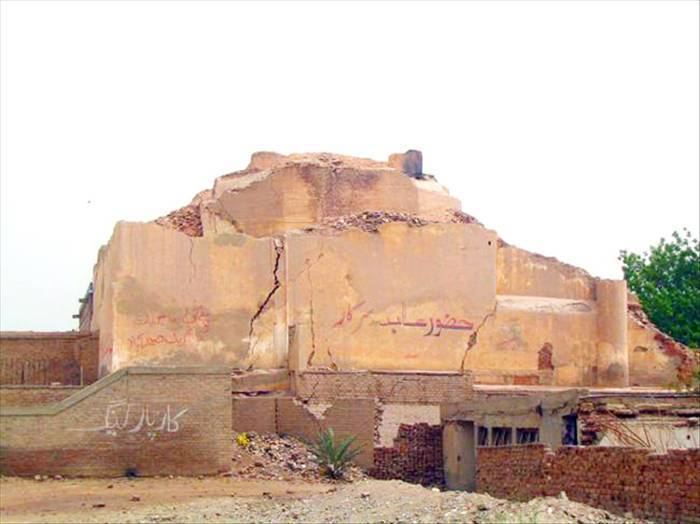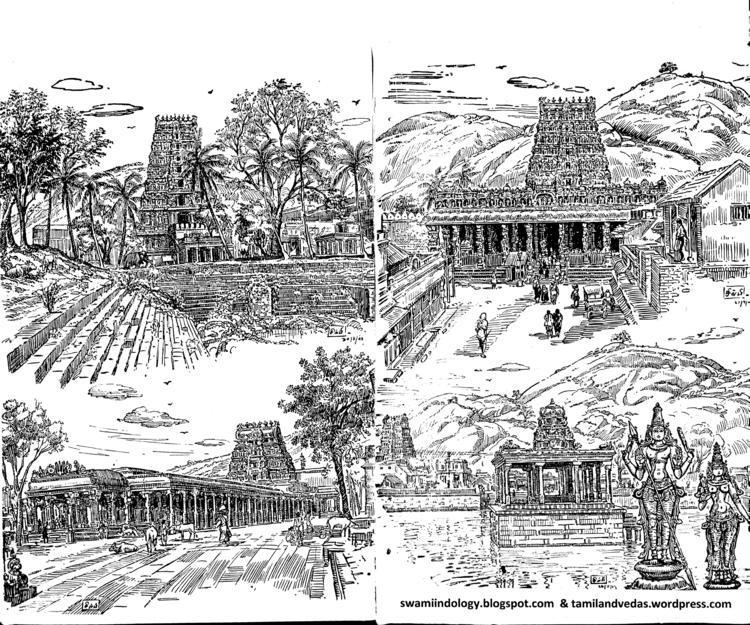 | ||
Similar Prahladpuri Temple - Multan, Shri Varun Dev Mandir, Shiv Mandir - Umerkot, Shri Laxmi Narayan Mandir, Lava temple - Lahore fort | ||
The Sun Temple of Multan, also known as the Aditya Sun Temple, was an ancient temple that was the base of a solar-cult dedicated to the Hindu Sun God Surya (also known as Aditya), that is located in the city of Multan, modern day Pakistan. While dedicated to a Hindu Deity, the solar-cult was derived from Iranian worship of Mithra.
Contents

The temple was highly revered, and drew pilgrims from throughout the region even during the first centuries of Islamic rule. The temple's famous Aditya idol was destroyed in the late 10th century CE by Multan's new dynasty of Ismaili rulers.

Location

The temple was noted by the medieval Arab geographer Al-Muqaddasi to have been located in the most populous part of Multan, between the city's ivory and coppersmith bazaars.
Background

Ancient Multan was the centre of a solar-worshipping cult that was based at the ancient Multan sun temple. While the cult was dedicated to the Hindu Sun God Surya, the cult was ultimately foreign in origin, and derived from worship of the Persian Zoroastrian worship of Mithra, who is frequently associated with sun. Some of the temple's appeal was derived from the belief that the temple's Aditya idol could cure maladies.
History

The original Sun Temple at Multan is said to have been built by Samba, son of Krishna, to gain relief from the symptoms of his leprosy. The Sun Temple is also mentioned by Greek Admiral Skylax, who passed through the area in 515 BC. Multan, earlier known as Kashyapapura, and its temple are also mentioned by Herodotus.

Hsuen Tsang is said to have visited the temple in 641 AD, by which time the Multan Sun Temple was the most important sun temple in ancient India. Hsuen Tsang described an idol of the Sun God made of pure gold with eyes made from large red rubies. Gold, silver and gems were abundantly used in its doors, pillars and shikhara. Thousands of Hindus regularly went to Multan to worship the Sun God. Hsuen Tsang is also said to have seen several devadasis ("dancing girls") in the temple. Travelers like Hsuen Tsang, Istakhari and others, mentioned other idols in their travelogue, saying that the idols of Shiva and Buddha were also installed in the temple.
Under Islamic rule
After the conquest of Multan by the Umayyad Caliphate in the 8th century AD, under the leadership of Muhammad bin Qasim, the Sun Temple was said to have been "carefully protected" by Multan's rulers. The temple was also used was used to ward off Hindu invaders, as the Muslim rulers would threaten to destroy the revered idol in case of invasion.
Multan's Sun Temple was noted to have accrued the early Muslim rulers large tax revenues from Hindu pilgrims. By some accounts, the temple accrued 30% of the state's revenues. Offerings brought by Hindu pilgrims, which were often very valuable, were forfeited to the city's rulers who used, sold, or gave the items away.
Destruction
By the mid 900s Multan had come under the influence of the Ismaili Shias under the leader Jalam bin Shayban, a proselytizing Da'i of the Qarmatian sect that had been dispatched to the region upon the recommendation of Fatimid Caliph Imam al-Mu'izz, to replace the city's rebellious Da'i whose views regarding Imam successorship contrasted with those of the Fatimids. The Qarmatian sect which replaced the rebellious Da'i had been expelled from Egypt and Iraq following their defeat at the hands of the Abbasids there. Qarmatians zealots had famously sacked Mecca, and outraged the Muslim world with their theft and ransom of the Kaaba's Black Stone, and desecration of the Zamzam Well with corpses during the Hajj season of 930 CE.
The temple was destroyed by Multan's dynasty of new Ismaili rulers in the late 10th century, who in turn built an Ismaili congregational mosque atop the site after abandoning the city's old Sunni congregational mosque which had been built by the city's early Muslim rulers. The Ismaili mosque that had been built atop the Sun Temple's ruins was then in turn destroyed in the early 11th century by Mahmud of Ghazni.
Legacy
The city of Multan may get its name from the Sanskrit name for the Sun idol and Sun temple, Mulasthana. Al-Biruni visited Multan in the 10th Century AD and left a glowing description of the temple, though it had been destroyed by the time he visited the city.
